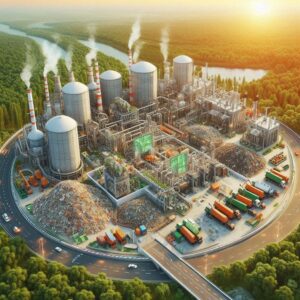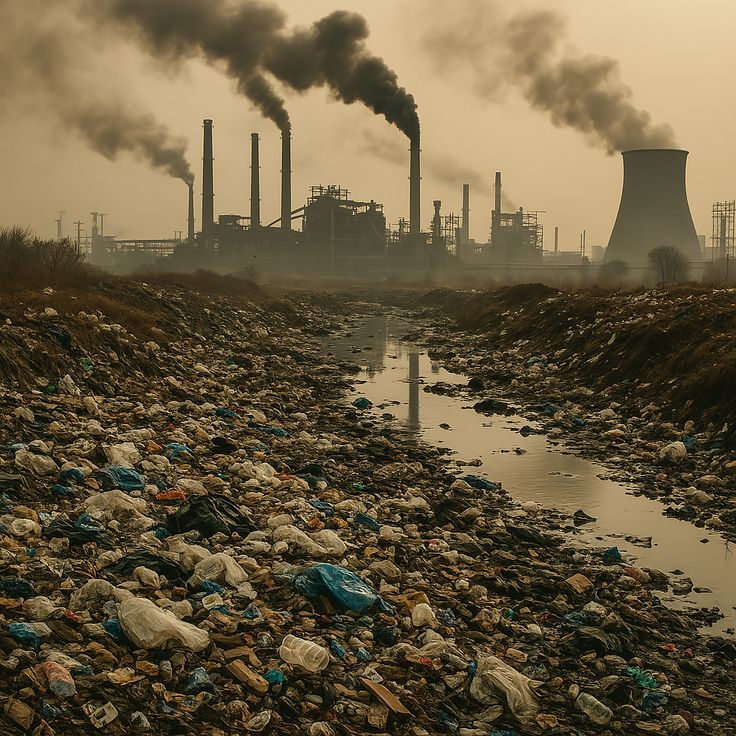
Waste-to-Energy Technologies
In the Name of God, the Most Gracious, the Most Merciful
Today, I am presenting to you a unique and comprehensive piece on waste-to-energy technologies, being written for the first time in the world. This writing will tell you how waste-to-energy technologies are playing a crucial role in sustainable futures, urban innovation, and environmentally friendly global development strategies. If you like this material, please let us know, and if you need more details on any specific topic, you can contact us.
🔥 Waste-to-Energy: The New Formula for Urban Sustainability
Waste-to-energy technologies have fundamentally transformed the concepts of modern urban management. These technologies are not only an effective means of waste management but are also becoming a reliable source for meeting cities’ energy needs. The process of obtaining energy from waste uses state-of-the-art techniques, including both thermal and non-thermal methods. Thermal methods include advanced technologies like incineration, gasification, and plasma arc gasification, while non-thermal methods include processes like anaerobic digestion and mechanical biological treatment. All these methods not only convert waste into energy but also protect the environment. Modern waste-to-energy plants are equipped with advanced filtration systems that clean toxic gases produced from waste combustion and minimize air pollution. These technologies not only prevent the emission of methane gas from landfills—which is 25 times more potent than carbon dioxide—but also reduce land use in landfill areas. Establishing waste-to-energy plants in cities not only enables proper waste management but also ensures the supply of clean energy in urban areas. These plants can meet cities’ electricity needs while also fulfilling thermal energy requirements for industrial processes. Thus, waste-to-energy technologies are becoming a vital source for achieving urban sustainability.
🏙️ Urban Innovation and Smart City Integration
Waste-to-energy technologies are becoming an essential part of modern city development and construction. Integrating waste-to-energy systems into smart city projects has now become a standard practice. These systems not only manage waste but also play a key role in stabilizing urban energy grids. Modern waste-to-energy plants are equipped with digital technologies that can analyze the quantity and type of waste, control energy production, and optimize the production process. Using artificial intelligence and machine learning, these plants analyze waste flow and can adjust energy production according to the city’s energy demand. The integration of waste-to-energy systems in urban areas is increasing cities’ energy self-reliance. These systems help cities achieve grid independence, reducing the risks of energy crises. Additionally, thermal energy obtained from waste-to-energy plants can be supplied to homes and commercial buildings in urban areas through district heating systems, reducing dependence on fossil fuels. Integrating waste-to-energy systems in smart cities not only improves waste management but is also a means of enhancing citizens’ quality of life.
🌍 Revolutionary Changes in Global Development Strategies
Waste-to-energy technologies have brought fundamental changes to global development strategies. For developing countries, these technologies are not only an effective means of waste management but also a cheap source of meeting energy needs. International organizations are now promoting waste-to-energy projects in developing countries, helping these nations achieve sustainable development goals. Waste-to-energy technologies promote the concept of a circular economy, where resources are reused rather than discarded. This concept can play a crucial role in stabilizing the global economy. In developed countries, waste-to-energy technologies are being used under international agreements to reduce carbon emissions. These technologies are helping countries achieve targets set under the Paris Agreement. Globally, investment in waste-to-energy projects is continuously increasing, promoting research and development in this sector. This investment is not only helping develop new technologies but is also creating new employment opportunities. The global expansion of waste-to-energy technologies is truly forming the basis of new global development strategies.
💼 Economic Benefits and Employment Opportunities
Waste-to-energy technologies have opened new doors for economic development and employment. These technologies are not only a source of energy production but are also driving growth in various economic sectors. After the initial investment, operational costs for waste-to-energy projects are relatively low, yielding long-term economic benefits. These projects not only reduce dependence on energy imports but also strengthen local economies. Employment opportunities in the waste-to-energy sector are continuously increasing. This sector requires various professionals, including engineers, technicians, researchers, and managers. These employment opportunities are emerging not only in developed countries but also growing in developing countries. Revenue from the sale of energy generated by waste-to-energy projects enhances the economic self-sufficiency of the projects. Additionally, costs associated with traditional waste management methods are reduced. Waste-to-energy technologies are economically sustainable and can drive growth across various economic sectors.
🌱 Environmental Protection and Combating Climate Change
Waste-to-energy technologies play a crucial role in environmental protection and the fight against climate change. These technologies not only assist in proper waste management but are also helping reduce greenhouse gas emissions. Reducing methane emissions from landfill sites is a key aspect of the fight against climate change. Waste-to-energy plants separate recyclable materials from waste before incineration, aiding resource conservation. Advanced pollution control systems installed in modern waste-to-energy plants clean toxic gases produced from waste combustion and minimize air pollution. These plants also play a significant role in water conservation by reducing the risk of groundwater contamination from landfill sites. Waste-to-energy technologies significantly reduce waste volume, decreasing the need for land use in landfill areas. These technologies meet international environmental protection standards and can play a vital role in achieving sustainable development goals.
🔬 Research and Development and Technological Innovation
Research and development in the field of waste-to-energy technologies have opened new possibilities. Research institutions worldwide are working on new and better methods of obtaining energy from waste. The goal of these research efforts is to increase the amount of energy obtained from waste and reduce process costs. One significant area of cutting-edge research is plasma gasification, which converts waste into syngas at high temperatures. This gas can later be used to generate electricity or thermal energy. Another research area is working on enzymatic processes that can produce biofuel from waste. The use of artificial intelligence and machine learning is making waste-to-energy processes more efficient. These technologies can analyze waste flow, automate processes, and improve production capacity. Continuous improvements in waste-to-energy technologies through R&D are increasing their efficiency and reducing costs. These advancements could make waste-to-energy technologies a significant source of energy in the future.
🏭 Industrial Use and Energy Production
Waste-to-energy technologies have created new opportunities for energy production in the industrial sector. Industrial facilities are now converting their waste into energy to meet their energy needs. This process not only reduces their energy costs but also lowers waste management expenses. Specific technologies have been developed to obtain energy from industrial waste, capable of converting various types of industrial waste into energy. Some industries sell excess energy generated from their waste to the grid, earning additional income. Industrial waste-to-energy projects have played a crucial role in solving waste management problems in industrial areas. These projects not only reduce the negative environmental impacts of industrial waste but also promote sustainability in industrial processes. Using industrial waste-to-energy technologies, industrial facilities can reduce their carbon footprint, enhancing the environmental sustainability of their products. These technologies are playing a key role in balancing industrial development and environmental protection.
🚀 Future Possibilities and Global Landscape
The future possibilities for waste-to-energy technologies are extremely broad. In the coming years, these technologies could play a significant role in the energy sector. Research and development are leading to the discovery of new and better methods for obtaining energy from waste, potentially increasing the amount of energy derived from waste. In the future, waste-to-energy plants may be available in small-scale and modular designs, usable in small towns and rural areas. These technologies could play a crucial role in solving electricity supply problems in developing countries. Global investment in waste-to-energy projects is continuously increasing, boosting the development of this sector. In the future, waste-to-energy technologies could combine with other renewable energy sources to form comprehensive energy systems. These systems could create stability in energy production and reduce the risks of energy crises. The future of waste-to-energy technologies is bright, and they could secure an important position in the global energy landscape.


